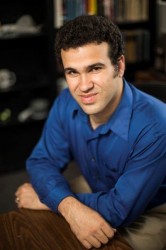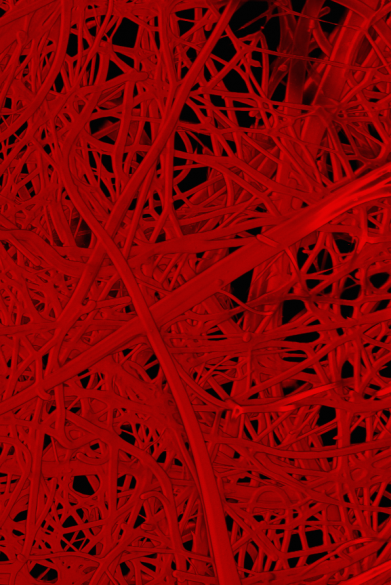by Amy Wolf
Vanderbilt University mechanical engineer Leon Bellan is working to create artificial human capillary blood vessels using cotton candy and gelatin.
His goal is for researchers to use these man-made capillaries to help keep artificial organs and other tissues alive, which could dramatically impact the field of regenerative medicine.
Vascular toolbox
Bellan’s lab is hoping these artificial capillaries will be a part of what he calls a “vascular toolbox” to help researchers sustain multiple types of human tissue.
“If you want to build thick tissue you need this vascular network, this sort of internal plumbing to help keep the cells embedded within alive,” said Bellan. “This vascularization issue is a hurdle for lots of areas of tissue engineering, so we feel our research can have far-reaching benefits.”
How it works

Bellan’s lab focuses on the smallest blood vessels in the human body, the capillaries. His unique “cotton candy” technique allows them to build channels that match this size.
“Our lab basically makes unique materials based on this sacrificial cotton candy approach that we’ve developed where we embed cotton candy or cotton candy-like materials within gelatin and then remove the fibers to make an intricate 3D channel system,” said Bellan.
When the gelatin is poured over the cotton candy, the materials do not blend together because Bellan figured out a way to dissolve the cotton candy on command.
“When the jello has set, we change the PH and then the fibers dissolve,” said Bellan.
1/10th the size of a human hair
Bellan’s lab grows endothelial cells with the goal of implanting them into the artificial channels. But, like real capillaries, the artificial blood vessels are minuscule, about 1/10 the size of a human hair. This makes the next step of lining the artificial channels with real human cells extremely challenging.

“We’re essentially trying to fit a 10 micron suspended cell within a 10 micron channel,” said Bellan. “What we’re trying to work out right now is how to get the cells into the channels without clogging.”
The next step in the research is to see if Bellan’s artificial capillaries will be accepted by real tissue.
“We need to see if we can get a real vascular network to integrate with our artificial capillary network inside these tissue-engineered constructs.”
Big picture
Bellan’s big picture dream is to use his artificial capillaries to help keep artificial organs alive.
“Instead of having to wait for a donor for an organ, you would actually build the organ seeded with the patient’s own cells.”
Though it may sound like science fiction today, Bellan says his lab is making progress.
Affordable science
Bellan wants the process of researching and making artificial capillaries to be affordable.

“We use gelatin not for any particular reason other than it is cheap and cells love growing on gelatin. It’s a basic, easy material to work with.”
The cotton candy machines used in Bellan’s lab are essentially adapted toys.
“Instead of paying thousands or millions or tens of millions of dollars for a piece of equipment, we pay $40.”
Bellan says this mentality turns research into reality.
“We want our research to be scalable and economically viable. Because it’s one thing to show that you can do it, it’s another thing to show that you can do it in a way that makes sense.”
Dr. Cotton Candy
Bellan has been surrounded by cotton candy for most of his career. So what does he really think about the pink stuff?
“I think it’s actually kind of disgusting to eat, but I don’t mind being associated with cotton candy forever. Hopefully I’ll do something else that’s interesting and unique in the future as well, but I’ll take cotton candy for now.”
This project was supported in part by National Institutes of Health grant R00 EB013630.